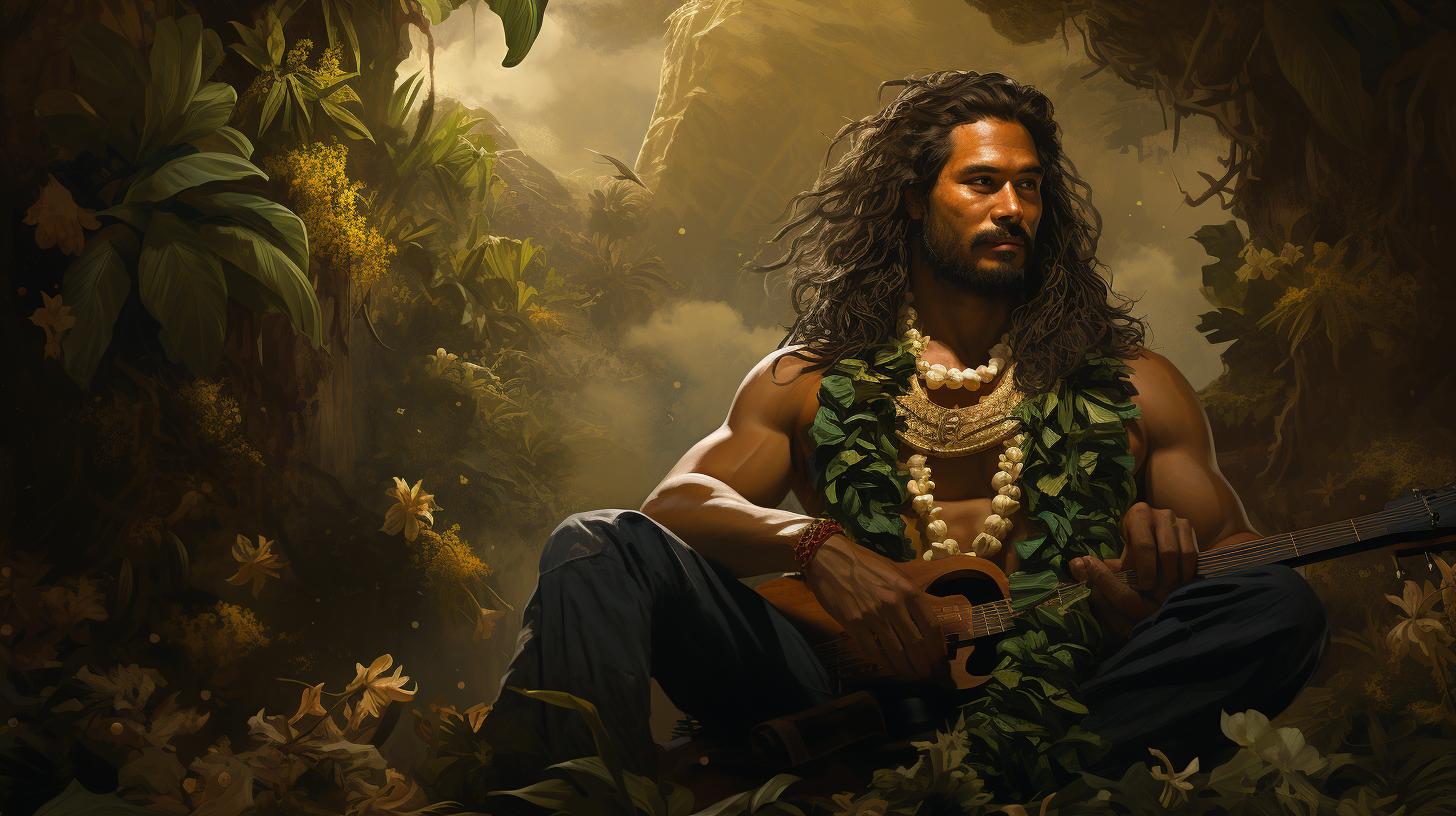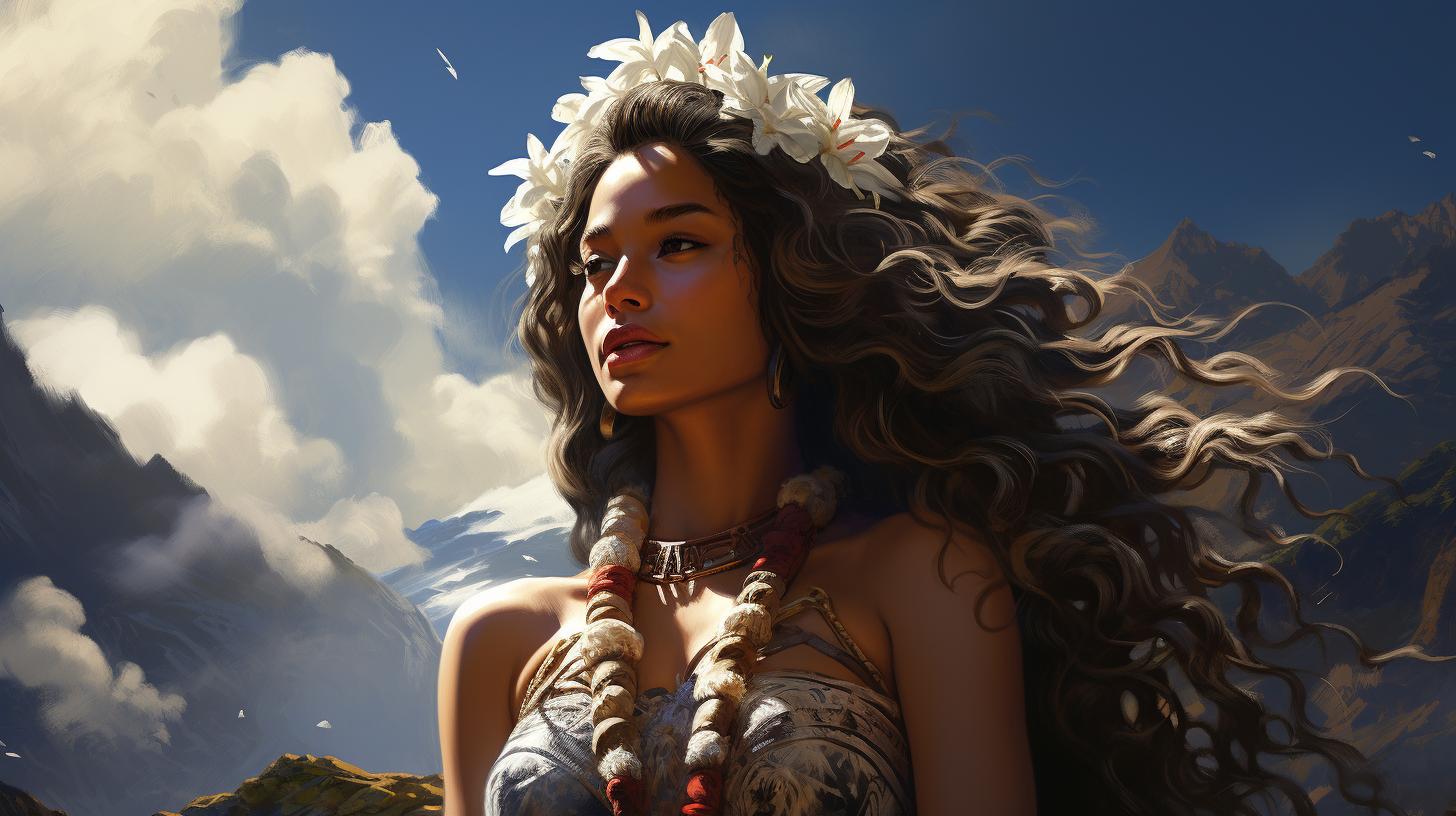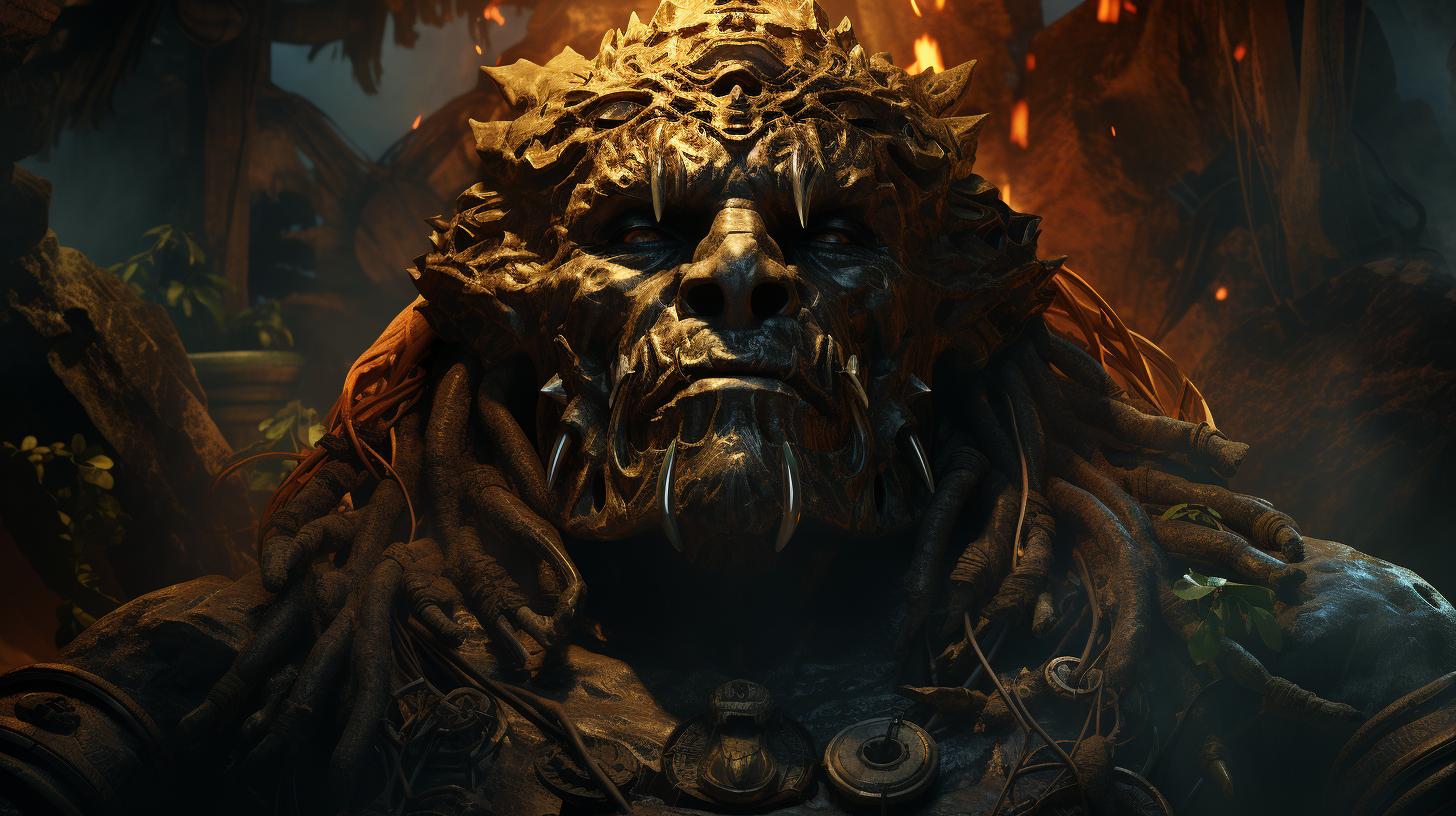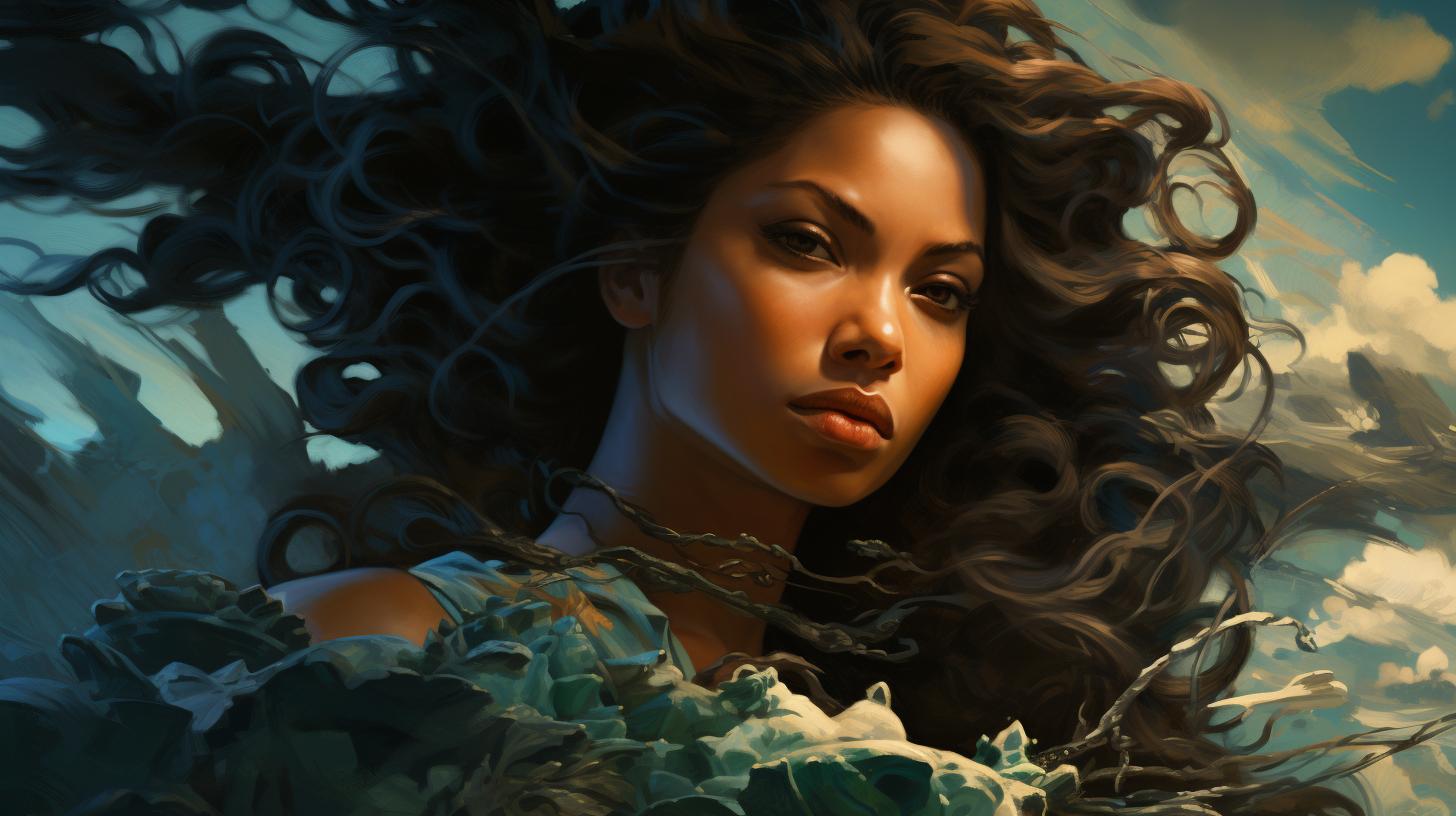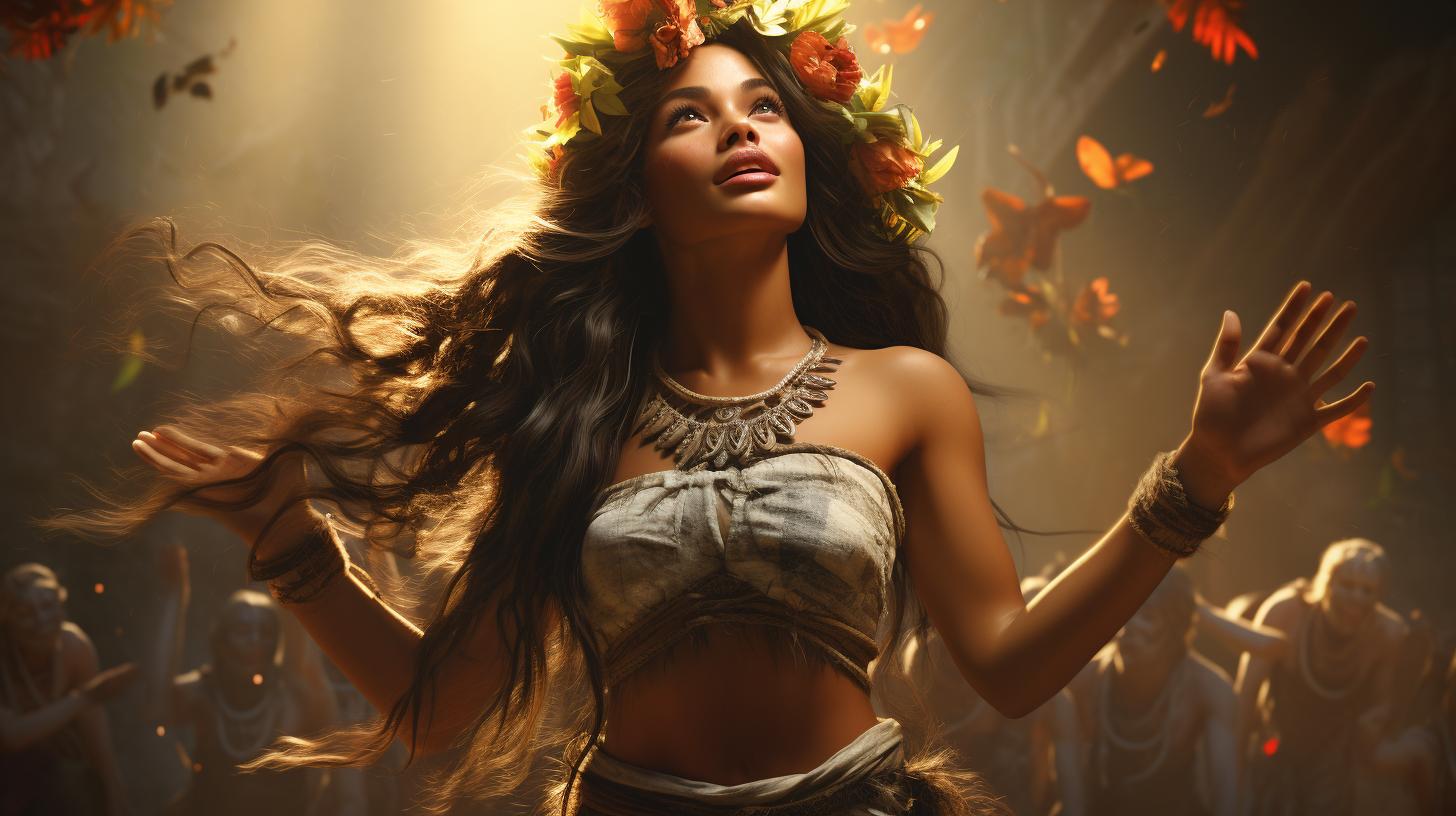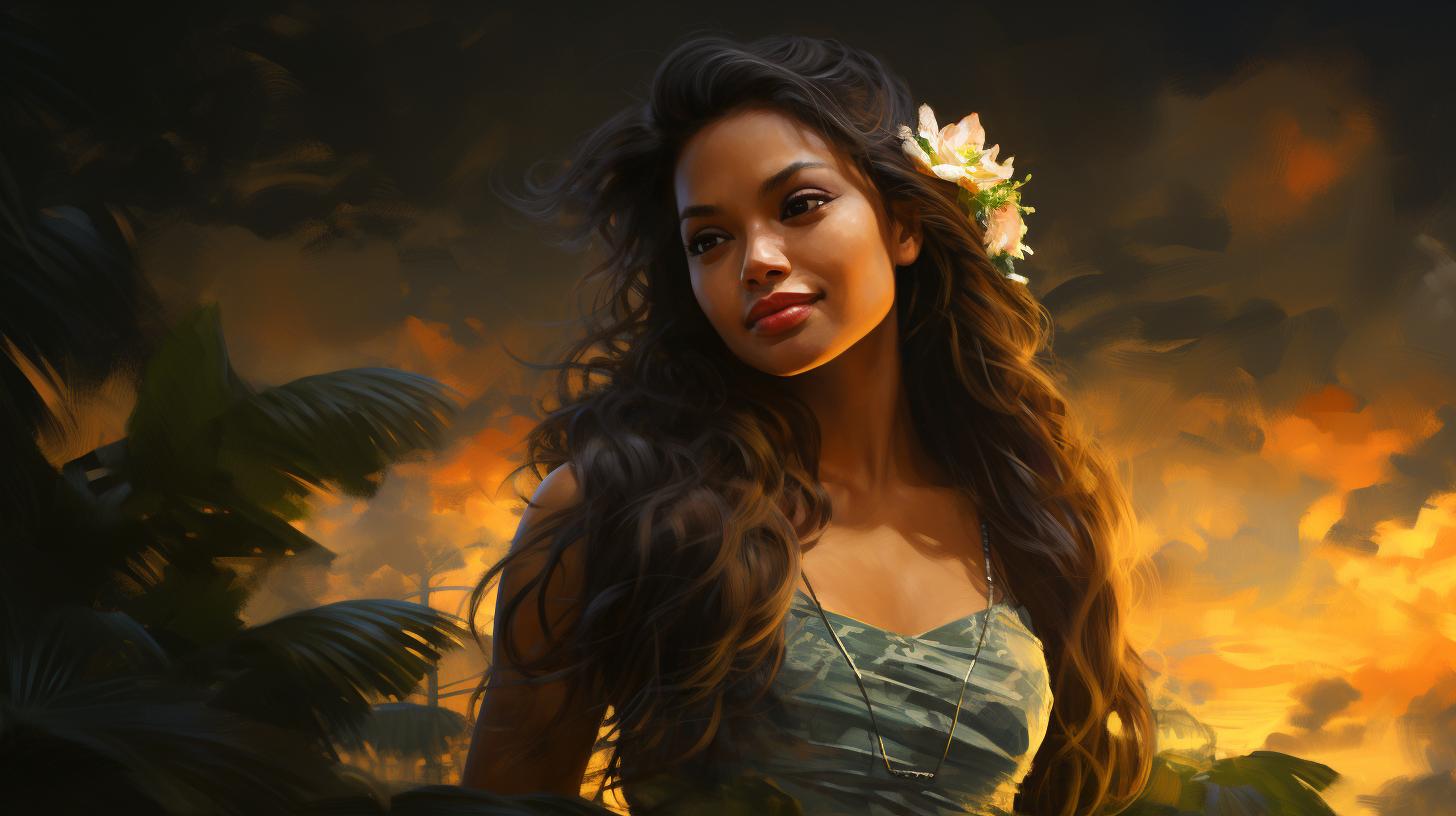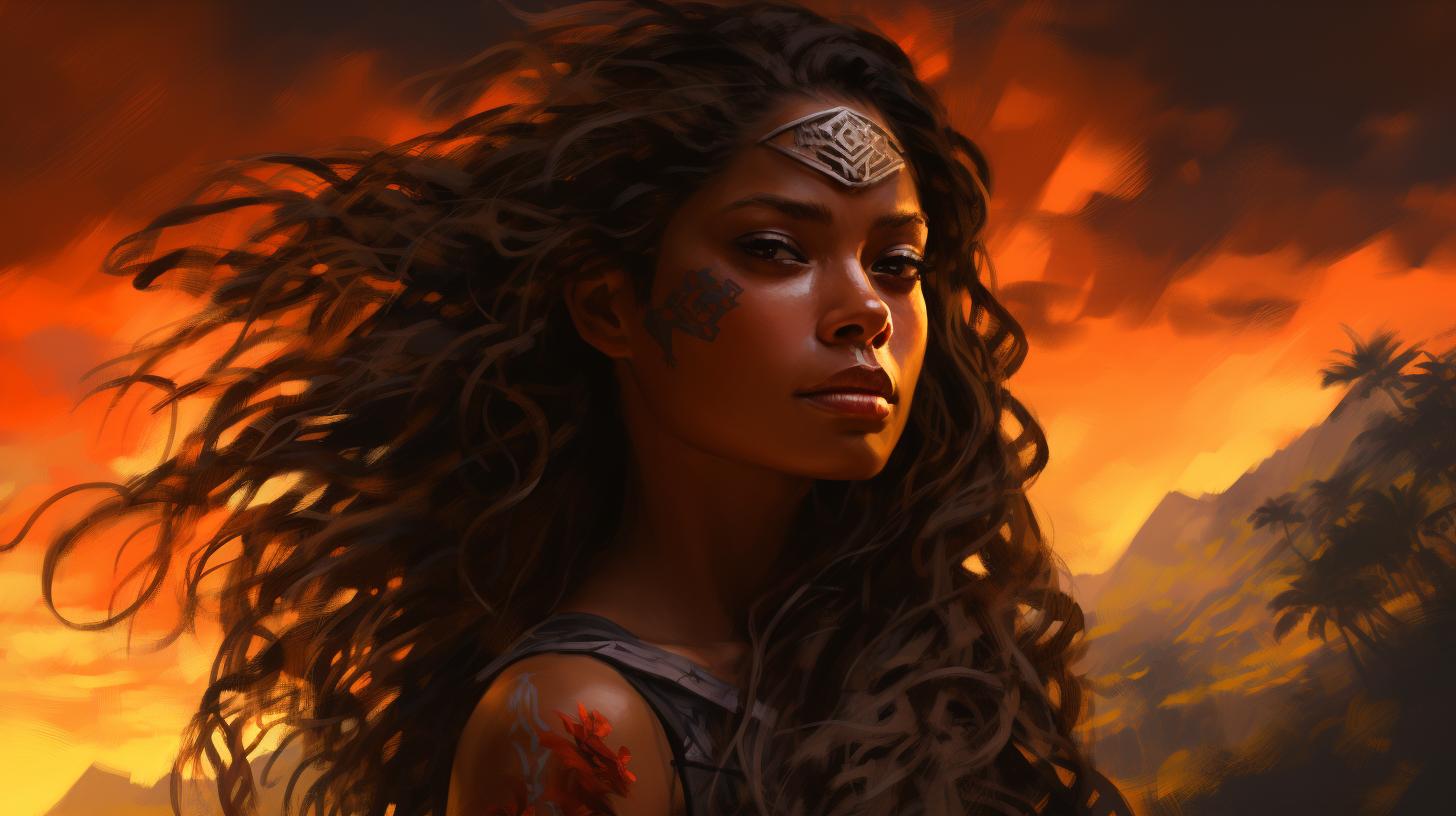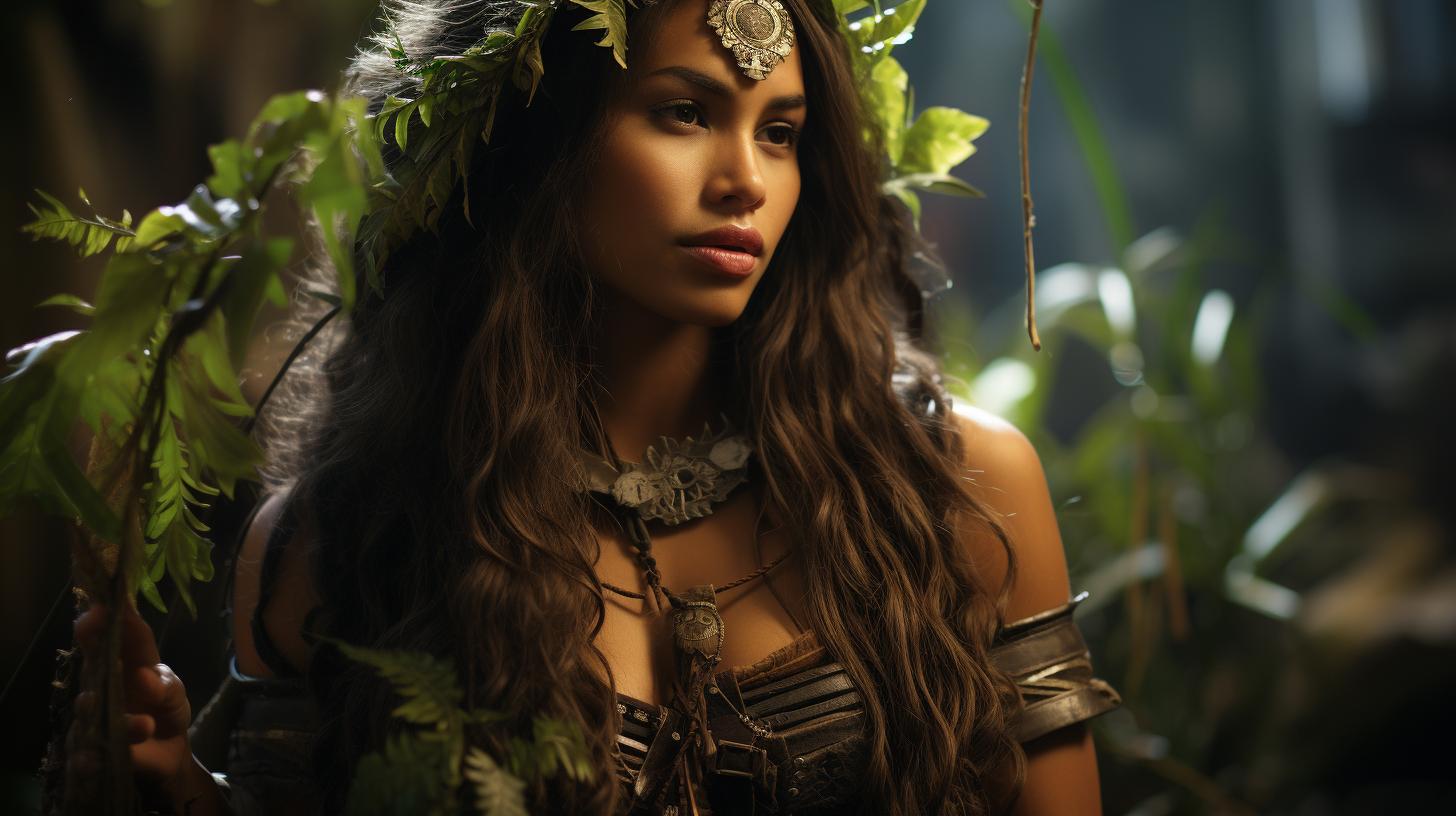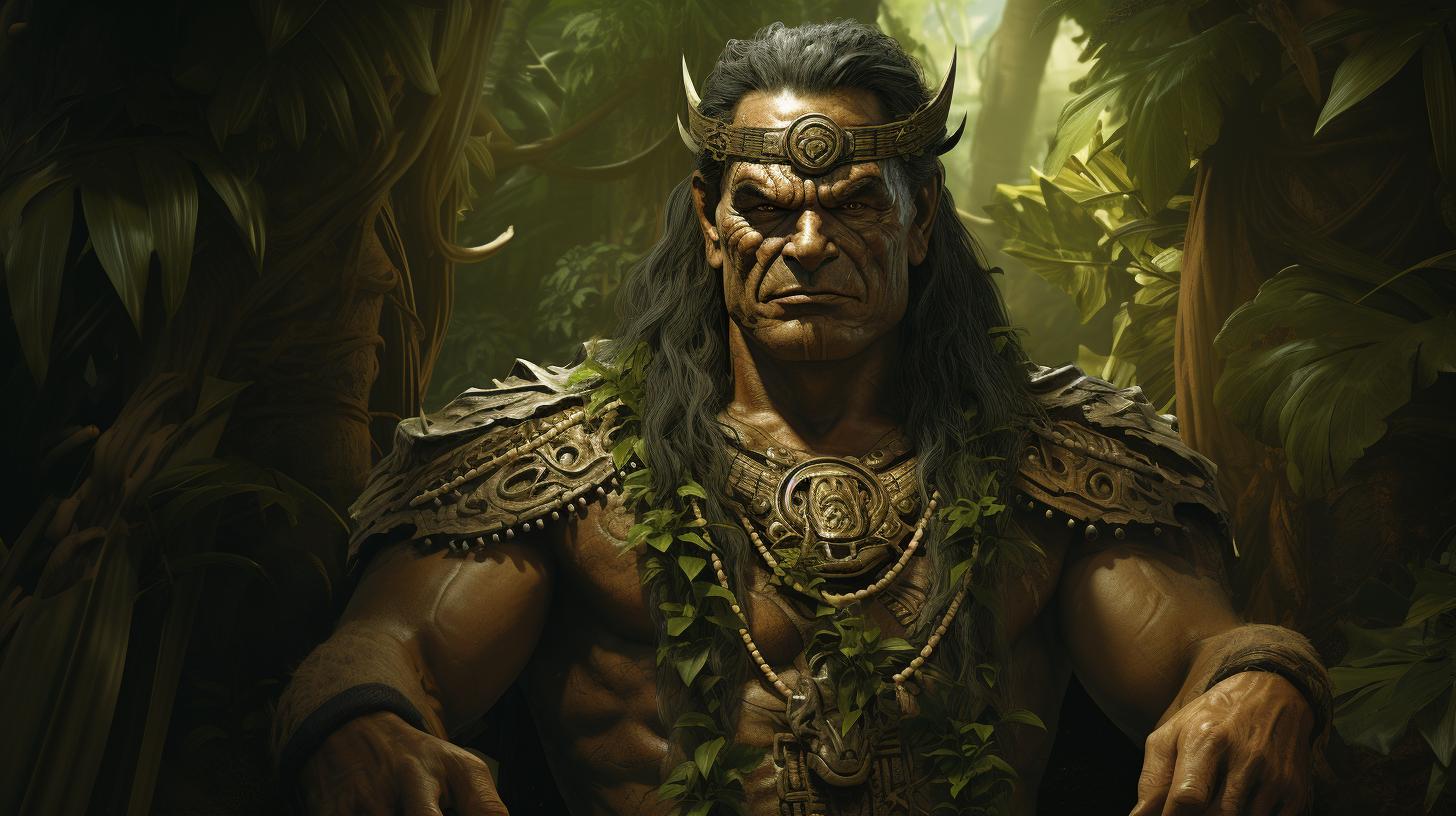Lono Hawaiian God: Exploring the Powerful Myth and Cultural Significance
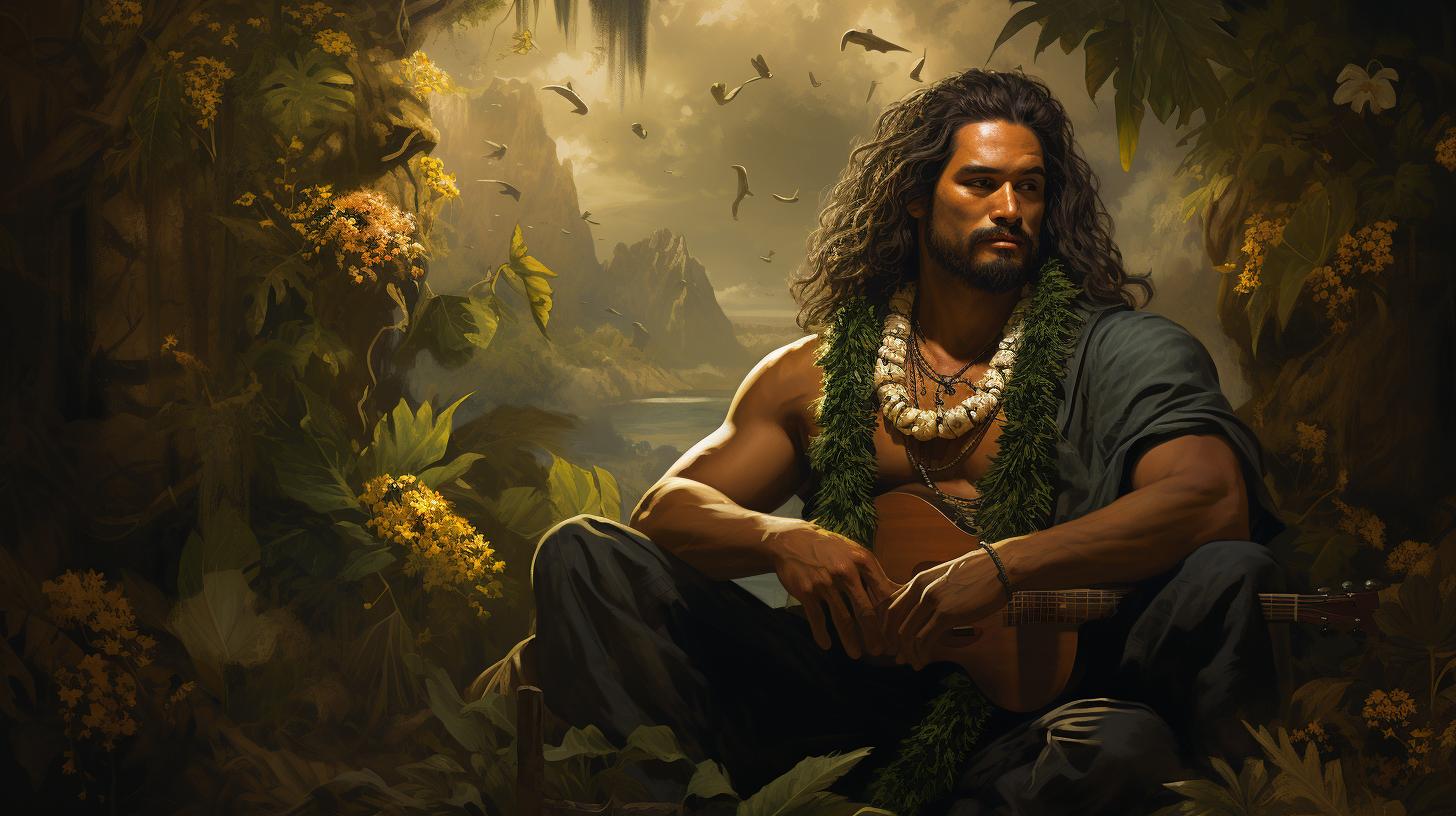
Lono, the Hawaiian god of agriculture and fertility, holds a significant place in Hawaiian culture. Associated with abundant harvests and the Makahiki festival, Lono embodies the essence of food and farming traditions.
With his connection to natural phenomena like rain and winter storms, Lono’s power and influence extend beyond agriculture. This article delves into Lono’s origins, role in creation mythology, relationship with nature, connections with other deities, and the story of Captain Cook, shedding light on the cultural significance and legacy of Lono in Hawaii.
The Origins of Lono Hawaiian God
The origins of Lono, the Hawaiian god of agriculture and fertility, are deeply rooted in Hawaiian mythology and tradition. Lono is one of the four ancient gods of Hawaii, alongside Kane, Kanaloa, and Kane’s twin brother.
According to Hawaiian legends, these gods existed even before the creation of the world.
The Four Ancient Gods of Hawaii
- Kane: The god of creation and life, associated with the sun, forests, and freshwater.
- Kanaloa: The god of the ocean, marine life, and healing.
- Lono: The god of agriculture, fertility, and peace.
- Ku: The god of war and commerce.
Lono’s Role in Creation Mythology
In the Hawaiian creation mythology, Lono played a significant role in separating Papa (earth) and Rangi (sky).
It is said that Lono used a net to catch the moon and the sun, sending them into orbit and creating a separation between heaven and earth.
Furthermore, Lono’s contribution to the creation of human beings is highlighted in the mythology.
He provided his brother Ku with fertile land to nourish their bodies, and Kane used Ku’s body to breathe life into the first humans.
These origin stories establish Lono as a powerful deity and emphasize his connection to life, fertility, and the natural world.
Lono: The Hawaiian God of Agriculture and Fertility
Lono, the Hawaiian god, holds a significant role in Hawaiian culture as the deity associated with agriculture and fertility. He symbolizes the vital connection between humans, nature, and the abundance of the land.
Lono’s association with food and farming highlights his importance in sustaining the Hawaiian people.
Lono’s Association with Food and Farming
In Hawaiian traditions, Lono is revered as the god of food and rain, crucial elements for bountiful harvests and abundant crops. His influence extends to all aspects of farming and agriculture, ensuring the fertility of the lands and the prosperity of the people.
Hawaiians relied on Lono’s favor to provide them with sustenance and to ensure their survival.
The Rituals and Offerings to Lono for Abundant Harvests
- During various ceremonies and rituals dedicated to Lono, Hawaiians offered prayers, chants, and ceremonial offerings to seek his blessings for plentiful harvests.
- The rituals often took place at heiau ipu or hale o Lono, sacred spaces constructed at the boundaries of ahupua’a, where the community would gather to express gratitude and seek divine intervention for agricultural prosperity.
- These offerings included fruits, vegetables, sacred plants, and sometimes even animal sacrifices, all presented as tokens of appreciation and a demonstration of the people’s reliance on Lono’s abundant provision.
Lono’s association with food and farming, along with the rituals and offerings dedicated to him, exemplify the deep reverence and reliance that the Hawaiian people had on him as the god who sustains their agricultural livelihood.
His power in ensuring abundant harvests and fertility solidified his position as a vital deity within Hawaiian culture.
Lono and the Makahiki Festival
The Makahiki Festival holds great significance in Hawaiian culture, and Lono plays a central role in its traditions. This annual festival, lasting several months from October to February, was dedicated to Lono and included various celebrations and rituals throughout the Hawaiian islands.
The Significance and Duration of the Makahiki Festival
The Makahiki Festival marked the beginning of the Hawaiian year and was a time of feasting, sports, and offering thanks for the bountiful harvest. It was a period of peace and abundance, during which warfare and unnecessary work were strictly prohibited.
The festival provided an opportunity for communities to come together, express gratitude, and honor the gods, particularly Lono.
The duration of the Makahiki Festival varied among different regions of Hawaii, with some celebrations lasting for several weeks and others spanning months.
It was a time of joyous festivities, where people engaged in various activities such as sports competitions, hula dances, and music performances. The Makahiki Festival served as a unifying event, fostering a sense of community and reinforcing cultural values.
Lono’s Influence on the Prohibitions and Celebrations
As a god of agriculture and fertility, Lono’s presence during the Makahiki Festival ensured the prosperity of crops and abundance in the coming year. During this sacred period, strict prohibitions were observed to show respect for Lono and maintain the sacredness of the festival.
The prohibitions included restrictions on warfare, unnecessary work, and fishing in the ocean. People refrained from engaging in any activities that could disrupt the peaceful and harmonious atmosphere of the festival.
Instead, they focused on honoring Lono through offering prayers, making offerings of food and other symbolic items, and participating in ceremonial rituals.
The celebrations during the Makahiki Festival were marked by joyful gatherings, where communities shared communal feasts and engaged in cultural performances.
It was a time to express gratitude for the abundance provided by Lono and to ensure the continued fertility of the land.
In conclusion, the Makahiki Festival served as a significant period in Hawaiian culture, dedicated to honoring Lono and celebrating the blessings of agriculture and fertility.
Through strict prohibitions and joyful celebrations, the festival reinforced the connection between the people, the land, and Lono’s divine influence on their lives. This time of unity and gratitude exemplified the deep reverence for Lono and the importance of harmonious relationships with nature and the gods in Hawaiian society.
Lono’s Relationship with Nature and Natural Phenomena
Lono, the Hawaiian god, is intricately connected to nature and various natural phenomena. His influence extends beyond agriculture, as he holds dominion over rain, storms, and other powerful forces of the natural world.
Lono as the Bringer of Rain and Winter Storms
Lono is widely regarded as the bringer of rain, ensuring the fertility of the land and bountiful harvests. In Hawaiian culture, rainfall is essential for the cultivation of crops and the overall well-being of the community.
Lono’s association with rain highlights his significance as a provider and sustainer of life.
Moreover, Lono is also closely associated with winter storms that often batter the Hawaiian islands. These storms, known as Lono-makua or ‘Lono the Provider’, bring much-needed rainfall to specific areas.
The intensity of these storms further emphasizes Lono’s connection to the forces of nature and his ability to regulate the environment.
Other Natural Phenomena Associated with Lono
- Thunder: Lono is linked to the booming sound of thunder, which adds to his portrayal as a powerful deity associated with storms.
- Lightning: The dazzling streaks of lightning in the sky are also attributed to Lono, representing his electrifying presence and influence.
- Earthquakes: Lono’s association with earthquakes symbolizes his ability to shape and transform the land.
- Whirlwinds: The swirling winds represent Lono’s authority over the powerful natural forces that shape the Hawaiian landscape.
- Springs in the Mountains: Lono is believed to have control over mountain springs, which serve as a source of life-giving water.
These various natural phenomena reflect Lono’s power and his integral role in maintaining the ecological balance and harmony of the Hawaiian islands.
Lono’s relationship with nature and the natural world further solidifies his status as a divine figure who holds immense influence over the forces that sustain life in Hawaiian culture.
Lono’s Connections with Other Deities
Lono and the Goddess Pele
The Hawaiian god Lono shares a unique connection with the goddess Pele, the deity of fire and volcanoes.
While Lono primarily represents fertility and agriculture, Pele embodies the transformative power of volcanic eruptions. Despite their contrasting domains, Lono and Pele were believed to collaborate in maintaining the delicate balance between creation and destruction in the Hawaiian archipelago.
Their symbiotic relationship demonstrates the interconnectedness of natural forces worshipped by the Hawaiian people.
Lono’s Relationship with Kane and Kanaloa
In Hawaiian mythology, Lono’s connection with the gods Kane and Kanaloa further highlights his significance. Kane, associated with creation and life, represents the spiritual essence of living beings.
Kanaloa, on the other hand, symbolizes the ocean and is often linked to mysteries and healing. Lono’s relationship with Kane and Kanaloa emphasizes his role as a unifying force, bridging the realms of fertility, agriculture, spirituality, and the natural world.
Together, these deities form a complex web of Hawaiian cosmology, intertwining various aspects of life and nature.
Lono’s Connections with Other Deities in Hawaiian Culture:
The Story of Captain Cook and Lono’s Identity
When Captain Cook, the English explorer, arrived in Hawaii, the Hawaiians mistook him for the god Lono. This misunderstanding led to significant consequences and shaped the relationship between Cook and the Hawaiian people.
Captain Cook’s Arrival in Hawaii and the Misunderstanding
In 1778, Captain James Cook and his crew landed on the island of Kauai, marking the first recorded European contact with Hawaii. The Hawaiian people, who were familiar with their own deity Lono, saw similarities between Cook and their god.
Cook’s fair complexion, his ship’s advanced technology, and the timing of his arrival during the Makahiki festival all contributed to the misidentification.
The Hawaiians believed that Lono had returned as a mortal being, and they welcomed Cook as a divine figure.
They escorted him to their temples, where he was treated with utmost respect and reverence. This encounter reinforced the Hawaiians’ perception that Cook was indeed Lono, and it set in motion a series of events that would alter the course of their history.
Lono’s Influence on Hawaiian Beliefs and Actions
The belief that Captain Cook was Lono had a profound impact on Hawaiian beliefs and actions. According to their mythology, Lono would eventually leave and depart from them. When Cook returned to the islands in 1779, the Hawaiians saw this as the fulfillment of their prophecy.
However, tensions arose, and a series of misunderstandings and conflicts led to Captain Cook’s death.
The Hawaiians’ actions were driven by their association of Cook with Lono and their belief that his departure was necessary for the god to complete his cycle.
The killing of Captain Cook was seen as a way to ensure Lono’s departure and the preservation of their cultural beliefs.
This significant event in Hawaiian history reveals the deep-rooted connection between Lono’s identity and the actions taken by the Hawaiian people during Captain Cook’s time in the islands.
- The Hawaiians mistook Captain Cook for the god Lono, due to their similarities and the timing of his arrival.
- Cook’s reception as Lono influenced the Hawaiians’ actions and their perceptions of his role.
- The Hawaiians believed that Cook’s death would ensure Lono’s departure, aligning with their mythology.
Overall, the story of Captain Cook’s mistaken identity as Lono demonstrates the profound impact of Hawaiian mythology and beliefs on their interactions with European explorers during this significant historical period.
Lono’s Cultural Significance and Legacy in Hawaii
The Continued Reverence for Lono in Hawaiian Society
Lono, the Hawaiian god of agriculture and fertility, continues to be revered in Hawaiian society today. His significance and influence are deeply ingrained in the cultural fabric of the islands.
- Lono is still regarded as a guardian and provider of bountiful harvests.
Hawaiians offer prayers and pay homage to Lono for abundant crops and sustenance.
- His role as a god of fertility is acknowledged and celebrated, with couples seeking his blessings for fertility and healthy offspring.
- Hawaiians hold great respect for Lono as a symbol of peace, as he was believed to bring harmony and tranquility to the islands.
Lono’s Impact on Hawaiian Art, Music, and Traditions
The legacy of Lono extends beyond agriculture and fertility, leaving a remarkable impact on various artistic expressions, music, and traditional practices in Hawaii.
- Hawaiian art often incorporates symbolism associated with Lono, such as depictions of red fish, white fish, black coconuts, and ‘awa. These representations pay homage to his presence and role in agricultural and natural abundance.
- Music plays a vital role in honoring Lono, with chants and songs dedicated to him during ceremonies and festivals.
Traditional instruments like the ipu heke and pahu are used to create rhythmic sounds that evoke the spirit of Lono.
- Lono’s influence can be seen in the traditional hula dances that celebrate the cycles of agriculture and fertility.
These dances express gratitude for the abundance provided by the god.
- Traditional practices related to cultivation and agriculture are still cherished in Hawaii, with a focus on sustainable methods that align with Lono’s principles of harmony with nature.
Overall, Lono’s cultural significance and legacy in Hawaii are manifested through the continued reverence for his role in agriculture and fertility, as well as his profound impact on art, music, and traditional practices.
His presence resonates in the hearts of Hawaiians, reminding them of the interconnectedness between nature, culture, and spiritual beliefs.
.











